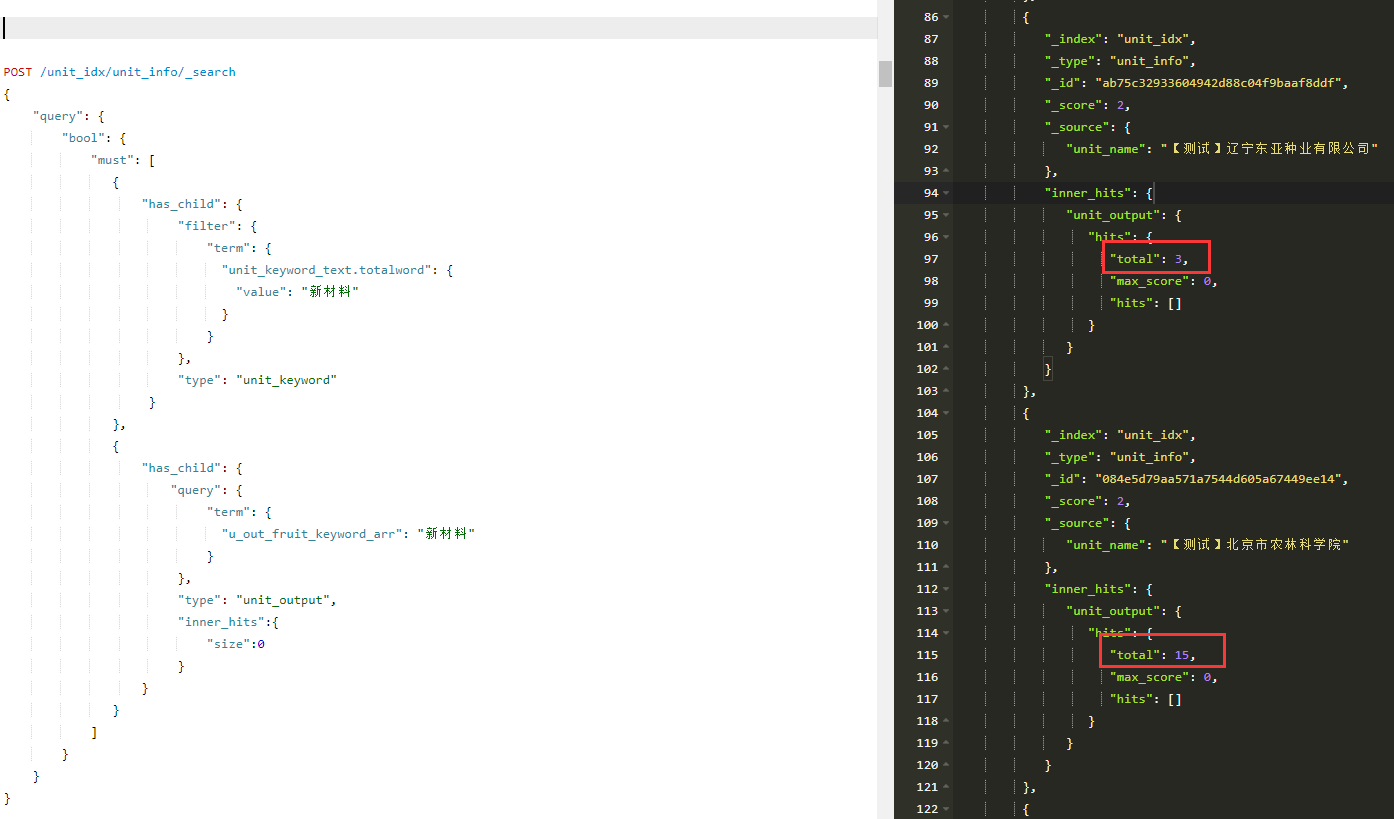Es版本5.6.3
具体父子结构如下:
机构信息表(父)、机构关键词表(子)、机构专利表(子)
根据关键词查询机构,并且同时得出这些机构发表的包含有该关键词的专利数,并按照专利数进行倒序排序。
也就是查询条件同时匹配父子表,然后根据字表的数量进行排序
目前我只是实现了查询,查询语句和结果如下:
问题:
根据查询结果,我想把有15个子元素的机构排在有三个子元素的机构上方,DSL语句中排序那里应该怎么写?
具体父子结构如下:
机构信息表(父)、机构关键词表(子)、机构专利表(子)
PUT /unit_idx
{
"mappings" : {
"unit_info": {
"dynamic": false,
"properties": {
"unit_id":{
"type":"keyword"
},
"unit_name": {
"type": "text"
}
}
},
"unit_keyword": {
"_parent": {
"type": "unit_info"
},
"dynamic": false,
"properties": {
"unit_keyword_busi_id":{
"type":"keyword"
},
"unit_keyword_text":{
"type":"text",
"fields":{
"cn":{
"type":"text",
"analyzer": "ik_smart"
},
"en":{
"type":"text",
"analyzer":"ik_max_word"
},
"totalword":{
"type":"keyword"
},
"ngram":{
"type": "text",
"analyzer": "ngram_analyzer"
}
}
}
}
},
"unit_output": {
"_parent": {
"type": "unit_info"
},
"dynamic": false,
"properties": {
"u_out_busi_id":{
"type":"keyword"
},
"u_out_fruit_name":{
"type":"text"
},
"u_out_fruit_keyword_arr":{
"type":"keyword"
}
}
}
}
}根据关键词查询机构,并且同时得出这些机构发表的包含有该关键词的专利数,并按照专利数进行倒序排序。
也就是查询条件同时匹配父子表,然后根据字表的数量进行排序
目前我只是实现了查询,查询语句和结果如下:
POST /unit_idx/unit_info/_search
{
"query": {
"bool": {
"must": [
{
"has_child": {
"filter": {
"term": {
"unit_keyword_text.totalword": {
"value": "新材料"
}
}
},
"type": "unit_keyword"
}
},
{
"has_child": {
"query": {
"term": {
"u_out_fruit_keyword_arr": "新材料"
}
},
"type": "unit_output",
"inner_hits":{
"size":0
}
}
}
]
}
}
}问题:
根据查询结果,我想把有15个子元素的机构排在有三个子元素的机构上方,DSL语句中排序那里应该怎么写?



2 个回复
zcc_vv - 95
赞同来自:
yixiongmao
赞同来自: